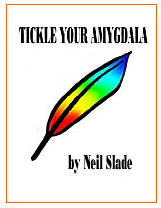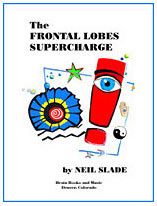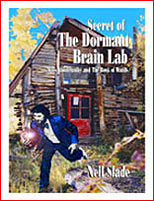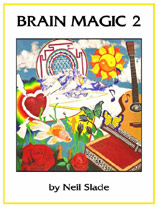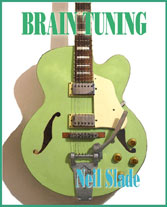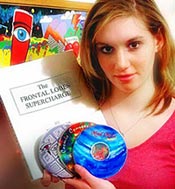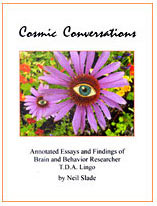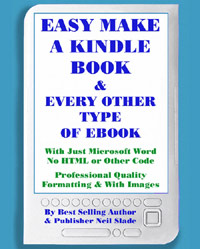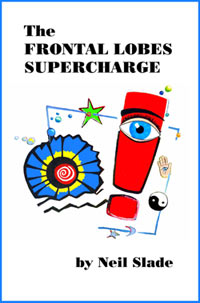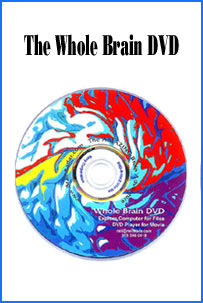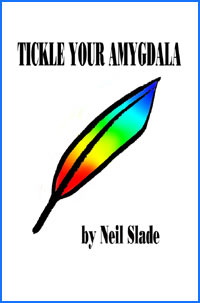|
NOTE: This is only one of 15 pages of Helpful Inkjet Printer Info Troubleshooting and Guide
And now..... My Independent Test of 12 Ink Brands--- INEXPENSIVE INK versus EXPENSIVE INK SHOOTOUT
1) REGARDING Continuous Ink Systems or CIS please take this link and READ 1B) Regarding NEW CHIPPED CANON CARTS (update Aug. 2010 )- Aftermarket Ink manufacturers have now engineered the chips Canon and others have used to force you to buy the OEM ink at outrageous prices- No Longer! Now you can get FOR ANY PRINTER affordable excellent quality ink such as supplied by Inkgrabber If you need PIGMENT BLACK for sharp text on plain paper, go to MIS Bulk Ink Please see my refill page for details: Refill Information for Bulk Ink 2) Oh boy, comparing inks-- this is a big job. Do not envy the person trying to do a FAIR comparison of inks. None the less, I've tried to do a fair and honest comparison of about a half dozen after-market Canon BCI-6 compatible pre-filled ink cartridges, and also compared these against Canon ink, and against MIS bulk ink (for refilling carts). I've tested only Canon and Canon compatible ink, but my educated guess is that the companies that make good ink for Canons, will produce better ink for all printers like Epson and HP than companies that make crappy ink for Canons. Follow? I've looked at other light-fastness tests, then performed additional tests based purely on color accuracy, related on this page. As far as I can tell, this is the first web site to give accurate comparisons of numerous brands of dye based Canon and compatible inks. I pay the same price for ink as everyone else and buy from the same dealers as everyone else. You can pick and choose who you buy ink from. For convenience, I've provided a link to the company I've bought ink from for years (INKGRABBER) they've provided me with excellent customer service- and if you've been on the web for a while, you know how important this is. Buy from them or not, its up to you. Many companies sell these brands of ink, and it's up to you who you deal with. One strong word of CAUTION however-- these days a lot of companies sell aftermarket ink- and NOT ALL INKS ARE GOOD, in fact, most give you results far from what you should expect from your printer. Companies that sell ink at rock bottom prices- say under $2 a cart-- or those generic replacement refills at your local office store-- avoid avoid avoid. Each brand printer prints with a different color profile and different formula- Epson is different from Canon which is different from HP which is different from Lexmark. You CAN NOT use the same ink in all printers- this is courting disaster for many reasons. Get the ink MADE FOR YOUR SPECIFIC BRAND AND MODEL.
3) SPECIAL NOTE CONCERNING Canon 3BCI BLACK and PGI-5 BLACK Aftermarket (i.e. inexpensive) cartridges This is an exclusive problem I have run into using "aftermarket 3BCI BLACK and PGI-5BLACK cartridges made for printers than use the LARGE capacity Black cartridge, i.e. ip3000, ip4000, and others that have BOTH the smaller 6BCI PHOTO BLACK cart as well as the double sized 3 BCI PIGMENT BLACK cart. This observation ONLY ONLY ONLY applies to this 3BCI-BK cartridge only, and not any of the 6BCI type carts which have proven absolutely reliable and first class in regards to use and accuracy of color. I continue to have the absolute highest regard for every and all Inkgrabber 6BCI Canon type carts, which is the most common Canon cartridge in use, exactly what I use myself and have for years, and which is probably the most commonly used cartridge these days by inkjet printer owners (obviously using previous model Canon printers that use the 6BCI carts). Here's the problem- the after market cartridge suppliers (including the First Rated Inkgrabber cartridges) are putting PHOTO BLACK ink in the 3 BCI carts-- THIS DOES NOT WORK RIGHT.
i.e: On plain or matte paper, the printing is less than crystal clear- is blurry, or applies more black color than it should. (it seems to be okay on photo paper) On older printers with a lot of mileage, the carts will even leak sometimes. WHY? Because the Canon printers using this size and type of cart are dependent on it containing HEAVIER DENSITY PIGMENT INK for text printing, and NOT lighter density PHOTO Black. Hence, if the cart does work at all- and brother, I've run into MANY 3BCI after market carts that leak like mad and render your printer USELESS- if the do work, the printing is below par, and the text is blurry and no where as neat and clean and sharp as if the cart contains the correct PIGMENT type ink as what is contained in OEM CANON carts. SO WHAT DO YOU DO?!?!?! 1) If you need to replace a 3BCI cart, spend the outrageous amount of money and get a genuine Canon cart. 2) Refill the aftermarket 3BCI cart containing the incorrect dye ink, and refill it with actual PIGMENT INK such as supplied by MIS and associates BULK INK here is one such supplier: MIS Bulk Ink PIGMENT BLACK 3) Just use the replacement cheap cart, and see if you are willing to be satisfied with the level of printing it gives you. Please note, Pigment ink when bought in bulk is a little more expensive than the dye ink. AH HA!!! Now we know why the aftermarket companies are not putting PIGMENT INK in their 3BCI carts! a) they don't know any better b) they are trying to save expenses thinking that their customers may not notice the difference or don't know any better c) they just don't give a hoot, and are putting the cheapest ink in their 3BCI carts because it barely works, or works some of the time. NEIL'S SUGGESTION: When your original Canon 3BCI cart runs out of ink, go to the above MIS Associates link, and refill with PIGMENT INK, and your printer will continue to work like it should and your printing will remain first class. I do not recommend at this time ANY other solution or brand of 3BCI after market cartridge until these manufacturers start using the proper ink in their carts and stop short cutting their customers. To me, this is commercial suicide-- sell one bad cart (a 3BCI cart filled with PHOTO BLACK that either performs poorly, or renders a printer unusable because the aftermarket ink cart manufacturer didn't want to spend the extra 10 cents it costs to put PIGMENT ink in a cart that is DESIGNED TO USE PIGMENT INK- and you will lose what may have been a loyal customer, and the hundreds or thousands of dollars that customer would have spent continuing to use all of your products.
Here is one other recent observation- I love Canon printers, and in my opinion after much experience, is that they still outperform, and are the most cost effective and accurate printers made. This having been said, I have had BAD EXPERIENCE with the most recent models of Canon printers that use the 8CLI type of cartridges- i.e. the carts that cost $13 each retail and claim a lightfastness that is permanent or that will rival real photographs. Here's the problem-- there are BUGS in the system that registers how much ink remains in one of these cartridges-- there are problems with the little MICROCHIPS installed on the carts. It is a system that has not been properly and sufficiently tested for 100% or even closer reliability. Ask your neighborhood printer dealer how many RETURNS they've had to deal with concerning the new Canon printer models with chipped carts.... Plenty. So, my advice for the time being-- get an OLDER Canon Printer that uses the reliable dependable 6BCI ink carts, like a ip3000, ip4000, ip5000, or ip6000. Not only can you get first class aftermarket ink carts for these from companies like Inkgrabber (above link), but you can refill with the highest quality bulk ink if necessary Till then, AVOID any printer using microchips on their ink carts-- its a rip off, and it significantly adds problems to your printing experience unnecessarily- except to increase the profit to these huge corporations who are already making billions of dollars selling their products. I * * * *
My tests reflect my own experience with these inks, no one else was involved in the tests or the results. Bear in mind, that the IMAGES below are only as good as your monitor and your monitor's color calibration. If you haven't calibrated your monitor (easy with free online tools, do your homework) DO IT. Further, things are more complicated because you are looking at SCANS of my prints, and this further makes it another step from reality. I've used a very good scanner, but none the less.... So, even the best digital monitor, perfectly calibrated will only come so close to what you see with your own eyes holding a printed sheet of photo paper in your hands. My page here is meant to give you a good IDEA of what I am seeing here in physical reality.
****************
This is a test for CANON COMPATIBLE INKS, using BCI-6 carts, one if not the most popular type of Canon ink in use. Extrapolate my results regarding ink for Epson, HP, Lexmark and others for which all the companies below also supply ink. My current primary color printers are 4 Canon i960 printers, and a Canon ip3000 printer using Kirkland Heavy Photo Gloss paper, a paper I have found to give excellent neutral results with official Canon ink. I've used Canon premium pro paper as well as Epson plain photo paper, but have never found any difference in color rendition from the inexpensive and reliable Epson plain photo paper. I now use Kirkland paper from Costco, and this is exceptionally good paper (rumor has it that Illford makes it for Costco distribution). It is a steal at 120 heavy duty glossy sheets for $20. All three of these papers produce excellent and neutral prints using Canon ink with the default Canon printer profile settings.
Further, I've been an artist and photographer all of my life, as well as an art teacher. So I've developed a very good eye that can detect things most people don't notice until I point it out. During the tests I rotated printers to make sure there were no printer inconsistency in the tests. When ink brands were changed I cleaned and flushed the printers BEYOND what was required to insure that the print was only showing the ink being tested and that there were no remnants of previous ink in the head.
Please bear in mind, that NO INK IS 100% consistent, nor are printers. You can have two identical printers from a manufacturer that have variations in components or even microchips that will have an effect on your prints. In addition, since inks are made by HUMANS, two batches of ink can also vary, even from the big major manufacturers. Use my findings as a guide, if you like. Ultimately decide using your own experience as the final guide to your ink use.
QUICK EASY SUMMARY OF INK TESTS My Opinion derived from my personal experience and tests
Okay, for those in a rush to know what I've found here is a brief summary of my results: Bear in mind, these tests reflect only Canon and Canon compatible inks found in BCI-6 cartridges, one of the most popular types of inks for home inkjet printers. One may speculate how the ink from these companies compares with other compatible inks for other models and printers. My own guess would be that this specific range of tests gives a good overall impression of the quality of a company's products. I might be wrong... but....
The Best OVERALL CONVENIENT QUALITY BEST BUY
I have not come to this conclusion either lightly or in haste. I've been printing and I do print tens of thousands of documents each year in my publishing business- color book covers, flyers, CD labels, and photos. This is the ink I use daily, and have used more than a year-- a long time and a gazillion documents. Inkgrabber used to supply me with G&G brand ink, but very recently they switched manufacturers, and their new ink IS EVEN BETTER as shown by my tests. Wilhelm Lab tests show that although inexpensive ink can be extremely accurate, it does not have great light-fast quality that compares with Canon ink, so don't use it for archival family photos that you plan on handing down to your grandchildren. This said, I have photos hanging on my wall, and have been for longer than I can remember (over a year), and they all still look perfect- and this is in an extremely well lit office. Wilhelm says the ink fades in a half a year, but in the REAL WORLD (not under accelerated "estimated" tests) this just has not been my experience whatsoever. For me, fading has never been an issue. Please see: Ink and Print Life Inkgrabber ink prints on all types of paper, and gives excellent results on plain, matte, and on photo paper. It is an excellent ink for most any project you have. Price is about $2.75 a cartridge. Note, other after market inks may print well on one type of paper, then either mediocre or completely terribly on another type, Inkgrabber does well regardless of the media, just like Canon, or good bulk ink. I've bought my Inkgrabber ink (and I pay the same price as everyone else) from Inkgrabber.com for years, so I can comfortably recommend them as reliable, as good a price as anyone, and willing to stand behind what they sell.
THE VERY BEST INK UNDER ALL PHYSICAL CONDITIONS Price being no object IS Official Canon Ink
HOWEVER------ Well, duh, it costs at least four to twelve times as much as other inks (pre-filled after market or bulk) and its made specifically for their own printers. It better be good!! Independent tests show that it has the best light fastness (fades the slowest) of any ink, probably because it uses the most expensive polymers and has undergone the most extensive Big Corporate Bucks Testing and Development. It prints very accurate colors compared to the original digital file, and for the most part completely neutral grays for black and white photo printing. So, if money is no object, get Canon ink. Price is roughly $12 a cartridge. HOWEVER- if you don't like paying over $75 for a set of ink carts, especially when you are printing documents that will end up in someone's trash can (flyers, temporary photos, short term printing, casual photos that you hang on your office cube or refrigerator, CD labels, etc etc etc)-- gee- about 99% of your printing jobs !!---you may consider a much less expensive alternative--- $16 for a set- (see above Inkgrabber for example). Could you tell the difference between a Canon ink print and a Inkgrabber ink print? Chances are no you could not.... keep reading and see actual prints below.
The Best LEAST EXPENSIVE and QUALITY ALTERNATIVE INK (with reservations) MIS Bulk Ink for refilling
Next to Canon, this is the best ink I've used and tested. I used MIS ink for years, and still do when I've had to fill a cart in an emergency. I had similar results with Computer Friends and Colorbat Bulk Inks as well. Please note however, Computer Friends cartridge refill plugs are WAAAAAAYYYYYYY better than MIS plugs, details: http://www.neilslade/inkjetstuff11.html MIS bulk ink is extremely accurate, works on all papers equally well, and has the best fade resistance after Canon inks. Please note, MIS use DIFFERENT ink in their pre-filled carts, so don't confuse. The best part is that it costs about $1 to refill a cartridge with this stuff. The worst part is that it can be messy refilling carts, and it takes time and practice to do it without getting it all over your hands and counter, but It can be done. So, the main thing to consider is this-- Do you want the convenience of just popping in a $2.75 cartridge when you need to- or do you REALLY need the fractional difference in color accuracy and somewhat extended fade resistance that MIS inks provide you with? PLEASE NOTE!! I refilled with MIS ink for a VERY LONG time, and it never let me down. I found that personally, spending an extra $1.75 and foregoing some permanence just wasn't an issue for me any longer, so for my practical real world use any more, it was much easier to switch to using just pre-filled carts and that's pretty much all I do now. Again, Could you tell the difference between a Canon ink print and an MIS ink print and a Inkgrabber ink print? Chances are no you could not.... keep reading and see actual prints below.
*************
Please bear in mind that there are many inks I have not tested, so there may or may not be better alternatives. Also bear in mind that the web is full of "shills" disguised as ordinary consumers saying how much they like a particular brand of ink-- then they go to the bank and cash the check written by the ink company they work for to advertise their ink. All of my testing and opinions are based strictly on my personal experience- PERIOD. No bull. If I find a better ink, I'll recommend it.
DETAILS and ALL INK PRODUCT TEST RESULTS Inks tested in Alphabetical Order Arrow B P I Canon Colorbat Bulk Ink Computer Friends Bulk Ink G & G Inkgrabber M M C M I S bulk ink My Ink Procolor V V G
PART ONE- CANON versus BULK INK Versus CHEAP AFTERMARKET Ink
There must be a million alternative ink suppliers out there these days selling ink much cheaper than the name brand printer manufacturing companies. Undoubtedly some of these ink sources sell crappy ink, and my recent tests show that they are NOT all the same, and there are significant differences in formulas. But to our delight, many of them seem to make perfectly good ink at a mere fraction of the price, making printing affordable, not astronomical. My testing shows that Inkgrabber pre-filled cartridge ink is the closest to Canon OEM ink, and I have been a paying customer of INKGRABBER for several years, first using "Rainbow" brand ink, and then switching to Inkgrabber last year when my tests showed it to be superior in accuracy and color matching. For PART ONE comparison updated done in 2008, I simply chose two alternative ink sources that I have personally been using for well over a year-- and compared it with official Canon ink. For PART TWO comparison I tested 7 brands of pre-filled after market Canon compatible cartridges. The Canon ink cartridges cost about $12 each plus tax, so that's about $75 for a full set of inks. Aftermarket sources sells inks for about $2.79 each, no tax, and that totals $16. The MIS Associates cartridges sell for $5 each, but in bulk 4 oz bottles at $8 and refilling cartridges using a syringe and a plug, and that brings the cost down to about $1 or less a cartridge. Extra work but the most economical method of ink refilling. The bulk ink is different ink and SUPERIOR to their pre-filled cartridge ink. I have only tested the MIS bulk ink. I've also used bulk ink from Computer Friends and Colorbat, and these give roughly equivalent results as MIS ink.
The big question is, is the Canon ink worth four to twelve times as much. You decide. I would expect similar results with other original manufacture ink versus custom alternative second party inks.
I printed on Epson Glossy Photo Paper, and later tests on Kirkland Heavy Photo Paper the stuff I use day in and day out. I then did the same test printing on Canon Photo Paper Plus glossy. There was absolutely no difference in results between the different papers regarding color tone and color accuracy.
No, your eyes are not playing tricks on you. This is a VERY close contest. The biggest difference I can see in person is that the Canon and MIS cyan is more ULTRAMARINE, and the G &G is more COBALT, not quite as evident in the web rendition above. Okay, now go to the art store and look at tubes of Ultramarine and Cobalt oil color to see what I am talking about. NOTE: The new INKGRABBER brand ink is a CLOSER COLOR MATCH than the G&G shown above. Currently the Ingrabber ink is a DEAD ON NEUTRAL MATCH. Hurray!
THIS IS A BIGGER PROBLEM WITH ALL OF THE OTHER BRANDS OF AFTERMARKET INK CARTS I"VE TRIED- including Procolor, BPI, and Arrow. They have a much more difficult time with neutral gray than Inkgrabber. I do not recommend any other after market inks at this time besides Inkgrabber. The exception would be Black and White ONLY photos, in which MMC ink gives wonderfully and perfect neutral gray across the board. After this, The Canon MAGENTA reflects a little more, and hence, 'pops' a little more than the others, the MIS magenta being a bit darker, the Inkgrabber being lighter and less pop. This difference makes the Canon mid-tones like orange and red stand out just a bit more than the others. See the dancer below. The Inkgrabber yellow is more intense, as is the Inkgrabber photocyan and photomagenta. This is actually nice, and makes greens and yellows very vibrant.
The inks are NOT EXACTLY the same, but they are really quite close. You have to really look pretty hard and close to spot the differences. You might even like the cheap stuff better in some respects many times. Graphics show even less difference than photographs. Below, the biggest difference can be seen in the orange band in the middle which has a bit more red to it in the Canon. The skin tone in the Inkgrabber is a little more olive, and actually more accurate. The black is a little deeper an more neutral in the Canon.
Okay, so the real question is- How does this apply to your printing on a practical and day to day basis? Cover up each one of the prints above with your hand and look at it alone..... they both look great, don't they?
Below- Each print is done with each color set- which is which? (Answer at bottom of this page..) How good are your eyes? ;-) Make sure and move each individual picture to the center of your monitor, especially LCD monitors for the big ones... they both have their good points.
********************************************************************************** PART TWO: NEW AFTERMARKET INK SHOOTOUT:
In March of 2006 I did a new aftermarket ink shoot out for Canon BCI6 inks, and the results are below- so, as long as you can get the dependable new cartridges of Inkgrabber ink, in my opinion its a no brainer- they make the best ink of the seven pre-filled aftermarket ink cartridges I tried. I compared the inks in 4 Canon i960 printers on various papers and settings, using various test images. I switched the inks between printers to detect if any one printer was problematic, and found that they all worked uniformly. Any problems with any ink remained regardless of the individual printer used. My task is simply to find- and then use for my business the ink that prints the best overall on CD labels (photo matte paper), color plain paper documents, and color book covers (photo paper). I very much appreciate the feedback and help I've received from everyone. I ran the test using a CD label that had four neutral shades of gray on it, printing on plain paper- plain Canon profile, then on matte paper using both a plain and matte paper profile, and then on photo paper using a photo paper profile and the highest quality settings. If color problems arose, I alternatively used an "improper" profile to see if this helped.
SPECIAL NOTES on Problems
Although I tried my best, I could not complete the tests using ARROW brand ink. I had two sets of cartridges ordered on two different dates, and although I had done some successful printing with the Arrow carts, when it came time to do the tests I could not get the carts to print without clogging up. The ink simply refuse to leave the cartridge....arg! This was extremely discouraging for this brand of ink- I tried everything, but at least 6 out of the 12 Arrow carts would not print. It is noted that Arrow supplies rather fancy looking plexiglass cartridge containers which the carts sit in inside the box, but unfortunately this doesn't make their carts work any better. Perhaps they will address this problem in the future. The results I was able to complete put Arrow in the middle of the pack regarding color accuracy, not the best, but not the worst either.
Papers used: PLAIN PAPER: Xerox plain paper, 24 pound, 100 brightness MATTE Photo PAPER: Fellowes Matte Photo Quality CD label paper (this is exceptionally good stuff) HEAVY GLOSSY PHOTO PAPER: Kirkland Heavy Weight Professional Glossy Photo Paper (again, really good stuff- rumor has it than Ilford makes this for Costco) I've used Canon Pro paper as well as Epson Glossy paper, and the Kirkland is heavier and smoother than the Epson, and gives every bit as good results as the Canon Pro paper to my eyes. The Canon profiles simply apply different levels of ink depending on the media, to match the media's absorption quality. My ratings simply reflect accuracy of color, or gray neutrality in relation to the original image.
LOOK AT THE PHOTOS and YOU DECIDE Bear in mind, the photos below are only accurate on your computer in regards to how accurately your computer monitor is set up. The best way to judge (as I did) was looking in person at the actual prints. The photos below, however, should give any internet visitor a pretty good idea how these compare. All photos printed using the Canon default "Glossy Photo Paper" profile, on Kirkland Professional Heavy Weight Glossy Photo Paper, (this gives excellent and neutral results using Canon ink) then scanned below simultaneously on one sheet- Make sure and move the image on your printer as your monitor may vary color depending on where the image lies on the screen. Also make sure you have CALIBRATED your monitor properly.
Please realize that the original digital file will always be superior to a reprinted, then scanned photo. The actual physical photos look better than what is seen on the monitor (where the digital file really shines)- but never the less, the comparisons below give a good indication of how the ink brands compare against each other on photo paper.
The Original Digital Image File
HIDDEN BRAND Photos, printed then scanned, no particular display order This is a SINGLE SCAN of photos glued to a sheet and accurately reflects here what I see when I hold this sheet in my hand.
Okay? Now that you've decided for yourself- here are the prints identified:
NEUTRALITY OF GRAY and overall color tone:
Original digital image Neutral Gray tones
HIDDEN BRAND ID no particular display order Printed with same paper and printer profiles as above color photo.
Okay? Which prints the best neutral grays alone without color?
Some Additional Notes and general observations: Black and White tone adjustment: You can adjust most any of these inks to print excellent neutral black and white only photos- in most cases by reducing the CYAN level in the printer profile and/or perhaps adding a bit of magenta. The current 2008 Inkgrabber ink is so good, it needs no neutral gray tweaking-- voila!
TYPES OF PAPER COMPATIBILITY WITH VARIOUS INKS
I only have so much time to display printing examples, so my descriptions here shall suffice given that most people will be printing on either photo or plain paper. One of my criteria for judging ink was its ability to print well on ALL types of paper and media. This separated the men from the boys, as it were. since I do significant CD label printing on matte photo paper, this particular ability was important to me however. Specifics: Inkgrabber gave very good and consistent results on all types, plain paper, matte photo paper, and glossy photo paper without having to adjust the default Canon profiles for these types of paper. It excelled on photo paper and gave the best prints on photo paper after Canon, and MIS bulk ink. All brands printed either excellent or good on plain paper with some variations in quality. All brands printed at acceptable levels on matte paper, with some better results than others. Exceptions: Procolor did not print well on photo paper, and looked washed out, but printed reasonably good on plain paper, and acceptable (although with a heavy cyan cast) on matte photo paper. BPI could not print on matte paper without extraordinary adjustments to color profiles. It also had this extreme color problems on photo paper.
FADING:
First read this page: Ink and Print Life
Then
see this link:
Best choice, print on an Epson printer using archival pigment inks and everything that entails- not cheap or easy, and the print will not have the brilliance of a dye based print as you get out of Canon printers. Your second best choice is to use official and expensive Canon inks and store the same way, out of air, out of light. It will probably last long after you are dead.
GENERAL OVERALL OBSERVATIONS
Although there are some differences between the better of the inks, the differences are rather small, and in many cases undetectable whatsoever, especially with graphics. You can make adjustments to compensate in your printer settings and get very close results from each for most purposes. The Canon and MIS colors are the best in terms of neutrality seen in grays. Also, the Canon and the magentas and related bright red/oranges are the most vibrant. The Inkgrabber yellows are nice and deep, compared to the Canon yellows which seem on the light side. The Inkgrabber cyan and photocyan are a slightly different kind of blue than the Canon and MIS cyan and photocyan. Thus, Inkgrabber blues and related color blends take on a slightly different color, perhaps more towards green. So, if you need really accurate blues, but like the Inkgrabber prices in general-- simply substitute the Inkgrabber Cyan's with either MIS or Canon cyans, then you'll still retain very very very close accuracy to Canon standards and not go broke buying ink. It's probably in the Inkgrabber cyans which are responsible for the mid-tone gray tones taking on the slight green tinge- see comment following. Nothing is more convenient that popping in a pre-filled new cart when you need to. Make sure and to keep using the cart until the printer won't let you print any more, because the sponge area of the cart has lots of ink left even when the reserve (clear side of the cart) is completely empty. If you don't want to refill carts, just go to INKGRABBER and get your carts inexpensively. Simple. If you are refilling your carts, I've always used MIS Associates ink-- you'll be very accurate in everything and your ink will be the lowest possible cost. I've also used ink by Computer Friends and Colorbat with similar great results. Prices vary among these brands, so shop around. There are other bulk inks that probably do well, but I have not used them. For most casual use, this is not even that big a deal. If you have an artist's eyes, you'll perhaps prefer the MIS or Canon cyans. Tweak the 1/6th and the 1/12 cost colors a tiny bit, and voila, you get very good, as good, and sometimes better results. Even if you don't tweak at all, they'll be very close to begin with. The biggest problem I've seen with the Inkgrabber ink is that 80% neutral grays take on a slight greenish hue. Most of the time this is unnoticed completely as in the poster above. For me, this is pretty much a non-issue. Otherwise, ise MIS or Canon cyans for the cure. You can mix any of these brands at one time in a printer head without problems, although results may vary a bit. All three inks are of the same consistency, and there is no bleeding as reported by others using inexpensive ink that I've ever noticed-- but then I always use either photo matte paper or glossy photo paper. I don't find enough difference to justify the huge cost of Canon inks for most purposes I can think the majority of inkjet customers are printing for. I would expect similar results with comparing ink for Epsons, and HPs. The only advantage of HP is that you get a new print head built into each cartridge- albeit, this is the least cost effective ink solution. You have less clogging, but you pay through the nose for it. And HP ink cart/heads STILL get clogged up anyway. If you are thinking about printing for an art gallery or for selling prints- well, you shouldn't be using dye inks to begin with. You need to use much more permanent pigment inks, and that calls for an entirely different set up and you need to do your homework on that one. The Epson R800 seems to be state of the art (this was over a year ago, things have now changed) for 8.5 X11 pigment ink prints- at $400 for the printer, and 8 ink cartridges at $14 each- Archival prints come at a price, just like darkroom photos. The Epson 2200 will do large format pigment inks, but prints much slower than the R800. And, Epsons are high maintenance- these printers will clog up if you don't use them every single day. I haven't done much research on pigment inks for Canon printers, and I don't think there are many if any, options at present. And keep in mind, pigment inks are not as vibrant as dye inks to begin with, so permanence has its price. Look at our printer shoot out page to see what I mean: http://www.neilslade.com/Ink/printtest.html
PS- YES YOU CAN MIX AND MATCH VARIOUS BRANDS OF custom blended INK without any problems save the inherent subtle tonality differences between brands, which are generally very very mild anyway.
But- if you print a lot of volume, casual photos, business stuff- find some cheap ink and use it. You won't see the difference without a magnifying glass, and neither will anyone else. Ultimately you have to decide if the difference in cost between the second/third party ink that you are using and the "official" ink is worth the enormous difference in price. Probably not in most cases. (ANSWER TO WHICH IS WHICH EXCLAMATION EYE: In the small pictures, the Canon Ink Set is in the middle, Inkgrabber on top, and MIS on the bottom. Adjustment can be made in printer settings to get these to match even closer than shown. I would suggest bumping up the yellow for Canon, and decreasing the Magenta in the MIS, increasing the Magenta and decreasing the Cyan in the Inkgrabber. You'll have to experiment to find what works best for you.)
ACCURATE and AFFORDABLE BRAIN PARTS Tickle Brain Spots
Back to The Amazing Brain Music Adventure Back to The Library From Another DimensionBack to The AMAZING Brain Book and Music Treasure Trove
|
PRINTED AND
NEW BRAIN BOOK! TICKLE YOUR AMYGDALA
The Whole Universe Brain DVD Special 40 Hours! JUST $49
5 Books 20 Audio Albums + BONUSESANYWHERE IN THE WORLD
Have Fun! Anti-Rules
Much more at The Amazing Brain Book and Music Store
|

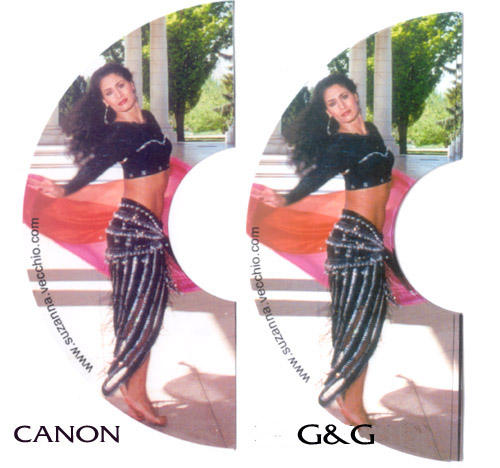
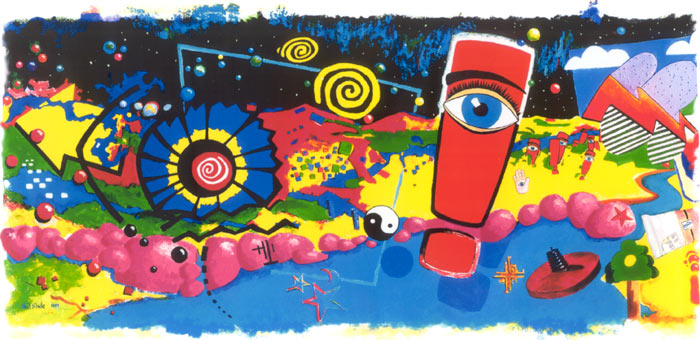
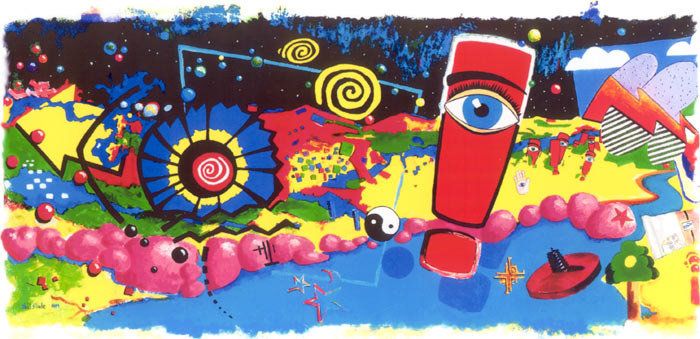
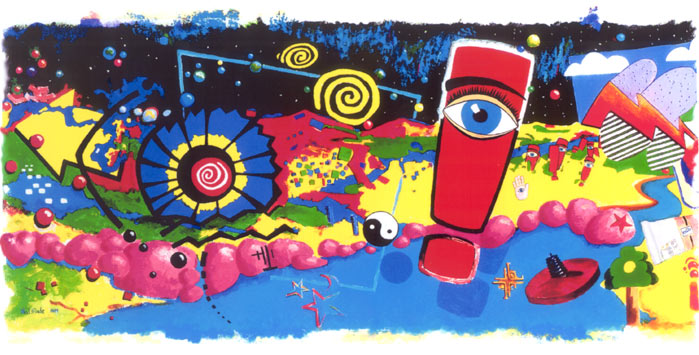

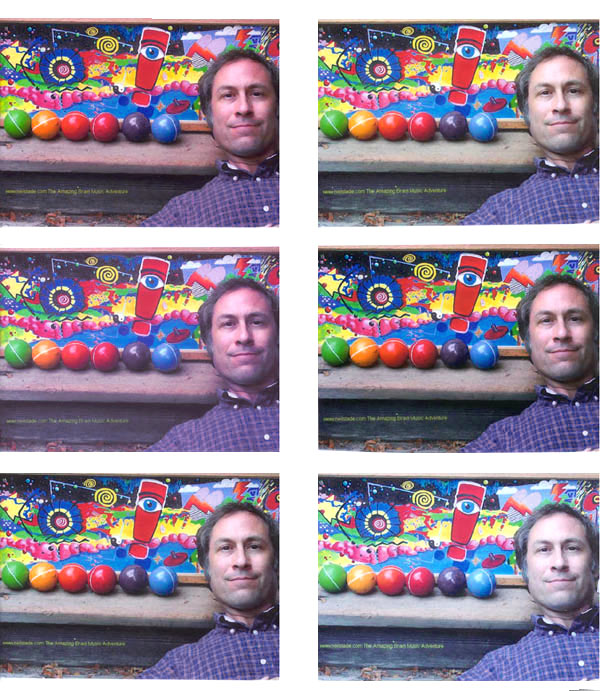
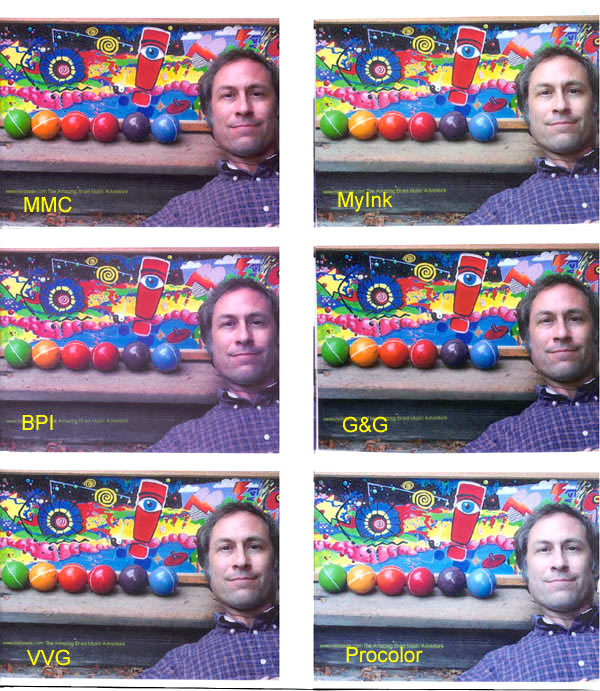
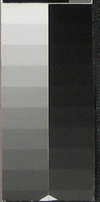
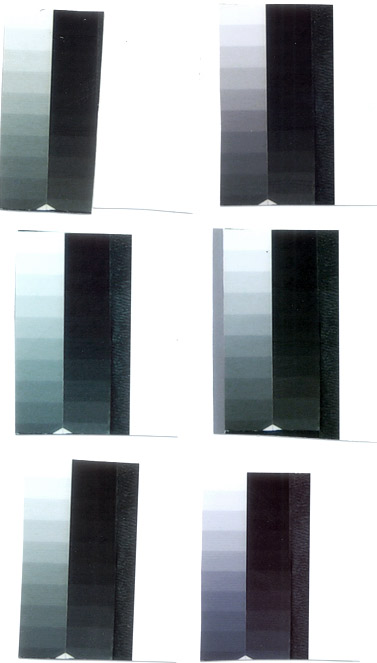
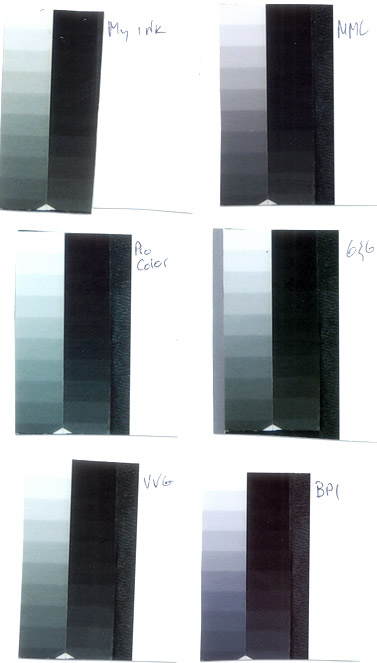
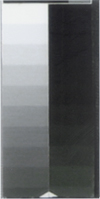 Inkgrabber
Inkgrabber 
